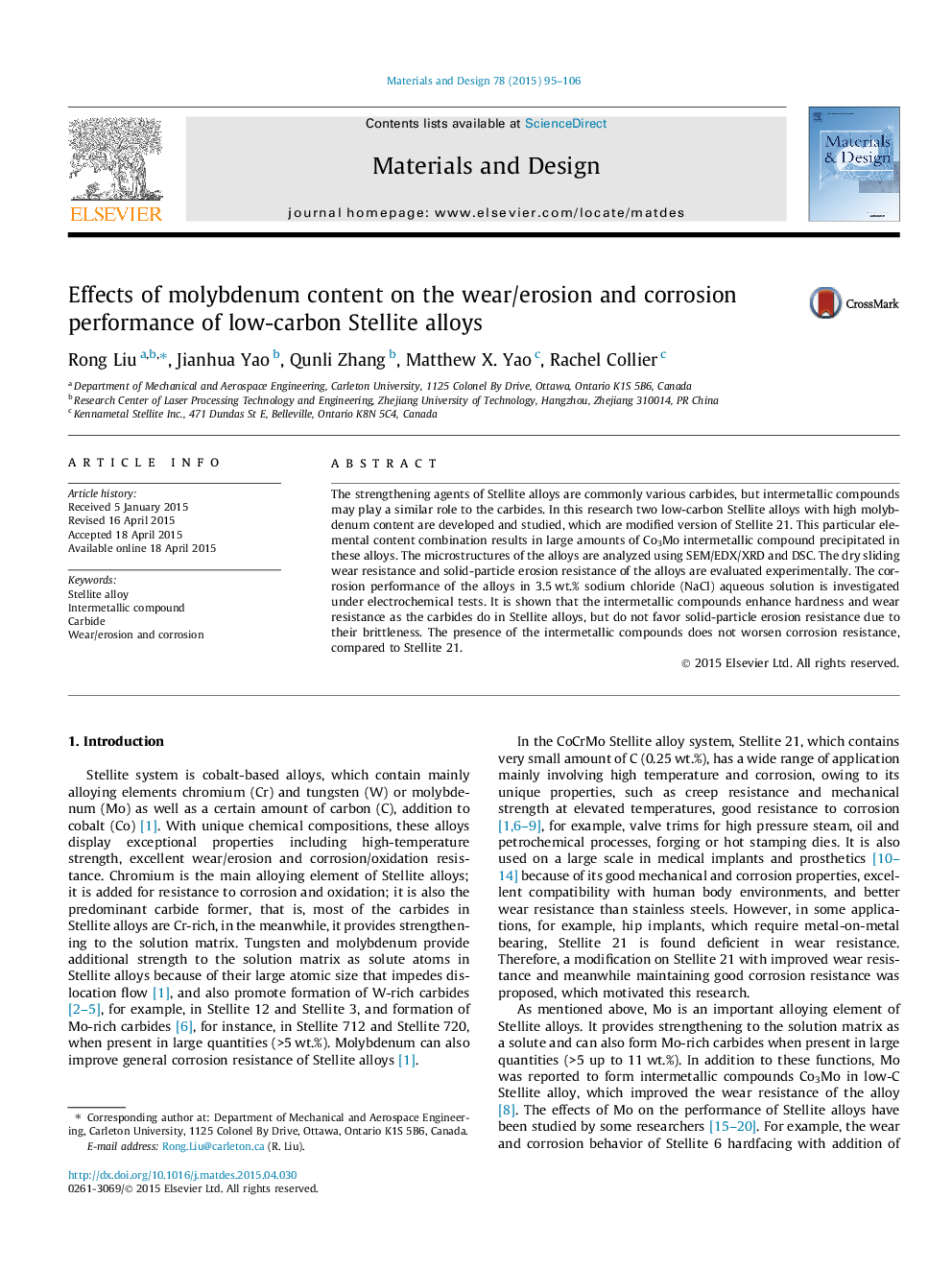| Article ID | Journal | Published Year | Pages | File Type |
|---|---|---|---|---|
| 828573 | Materials & Design (1980-2015) | 2015 | 12 Pages |
•Increasing Mo content in low-C Stellite alloy promotes formation of Mo-rich intermetallic compounds.•Mo-rich intermetallic compounds enhance hardness and sliding wear resistance of Stellite alloys.•Mo-rich intermetallic compounds worsen solid-particle erosion resistance of Stellite alloys due to their brittleness.•Mo-rich intermetallic compounds are better than carbides in Stellite alloys for corrosion resistance.
The strengthening agents of Stellite alloys are commonly various carbides, but intermetallic compounds may play a similar role to the carbides. In this research two low-carbon Stellite alloys with high molybdenum content are developed and studied, which are modified version of Stellite 21. This particular elemental content combination results in large amounts of Co3Mo intermetallic compound precipitated in these alloys. The microstructures of the alloys are analyzed using SEM/EDX/XRD and DSC. The dry sliding wear resistance and solid-particle erosion resistance of the alloys are evaluated experimentally. The corrosion performance of the alloys in 3.5 wt.% sodium chloride (NaCl) aqueous solution is investigated under electrochemical tests. It is shown that the intermetallic compounds enhance hardness and wear resistance as the carbides do in Stellite alloys, but do not favor solid-particle erosion resistance due to their brittleness. The presence of the intermetallic compounds does not worsen corrosion resistance, compared to Stellite 21.
Graphical abstractFigure optionsDownload full-size imageDownload as PowerPoint slide
